¡Hola de nuevo!
Nuestro primer viaje de agosto de 2007 fue a Portugal. Hacía mucho calor. Empezamos el viaje en Lisboa. Aquí estoy delante del monasterio de los Jerónimos, una preciosidad gótica.
Hi again!
Our first trip in August 2007 was to Portugal. It was very hot. Our trip began in Lisbon. Here I am in front of the Jeronimos monastery, a gothic jewel.
Como podéis ver en este arco, la decoración de este monasterio es muy elaborada.
As you can see from this arch, the decoration of that monastery is very elaborated.
As you can see from this arch, the decoration of that monastery is very elaborated.
Este es el monumento a los descubridores portugueses que fueron a conquistar nuevas tierras. El de delante de todos es Enrique el Navegante.
This is the monument to the Portuguese discoverers who went to conquer new lands. The one in front is Enrique el Navegante (Henry the Navigator).
This is the monument to the Portuguese discoverers who went to conquer new lands. The one in front is Enrique el Navegante (Henry the Navigator).
En Belem, la zona de los Jeronimos y del monumento a los descubridores también está esta bonita torre del siglo XVI, la Torre de Belem.
In Belem, apart from the Jeronimos monastery and the Monument to the Discoverers, there is also this beautiful tower from the 16th century, the Tower of Belem.
In Belem, apart from the Jeronimos monastery and the Monument to the Discoverers, there is also this beautiful tower from the 16th century, the Tower of Belem.
Esta es la catedral de Lisboa. A mí me parece más un castillo que una catedral. Para llegar hay que subir una cuesta que ¡bufff!
This is Lisbon cathedral. For me it looks more like a castle than like a cathedral. To get there we had to climb a slope that was quite tiring.
This is Lisbon cathedral. For me it looks more like a castle than like a cathedral. To get there we had to climb a slope that was quite tiring.
Esta es la vista que se ve desde el Miradouro de Santa Luzia, desde la catedral aún hay que subir más cuesta para llegar hasta aquí pero las vistas son preciosas.
This is the view that you can see from Santa Luzia viewpoint. From the cathedral you must climb even more to get there, but the views are amazing.
El segundo día fuimos a Queluz. Los jardines del palacio real de Queluz estaban en su mayoría cerrados por obras, pero lo que pudimos visitar era muy bonito.
The second day we went to Queluz. The gardens of the Royal Palace of Queluz were mostly closed for works, but what we could visit was very beautiful.
El palacio real de Queluz me recuerda a Versalles o a Aranjuez, es de la misma época (siglo XVIII).
The Royal Palace of Queluz reminds me to Versailles or Aranjuez, as it was built in the same period (18th century).
Después del palacio de Queluz, visitamos otro palacio, el palacio da Pena, en Sintra (un pueblo preciosísimo que os recomiendo). Lo mandó construir un alemán que fue marido de una reina de Portugal y que era familia de Ludwig II ("el Rey Loco") y se inspiró en los famosos castillos de Baviera para tener una réplica en Portugal.
After the Royal Palace of Queluz, we visited another palace named Pena Palace. It's situated in Sintra (a wonderful village that I recommend you). A German married to a Portuguese queen made build it. That German was a relative of Ludwig II (the Mad King) and he was inspired in the famous castles of Bavaria to have a replica in Portugal.
Parece un castillo de cuento de hadas, ¿a que sí?
It looks like a fairytale castle, doesn't it?
It looks like a fairytale castle, doesn't it?
También en Sintra se encuentra la Quinta da Regaleira. Un señor rico la mandó construir a un arquitecto italiano. Como el señor parece ser que era masón y le gustaban las cosas esotéricas, la casa y los jardines están llenos de detalles esotéricos como pozos, grutas subterráneas etc. ¡Es genial!
In Sintra there is also a house named Quinta de Regaleira. A rich man asked an Italian architect to build it. It seems that the rich man was a mason and he liked esoteric things. So the house and the gardens are full of esoteric details like pits, subterranean grottos and so on. It's amazing!
Un detallito del jardín de la Quinta de Regaleira en Sintra.
Here you can see a detail of the gardens of Quinta de Regaleira in Sintra.
El tercer día fuimos de excursión a Mafra, Sobreiro y Ericeira.
Al monasterio de Mafra le llaman "el Escorial Portugués". Un rey que no tenía hijos hizo la promesa de construir un convento aquí si su mujer le daba descendencia. Nació una niña y el rey mandó construir y construir, el convento se convirtió en monasterio y se le añadió un palacio, aunque los reyes apenas vivían en él. ¡Es realmente enoooooooorme !
On the third day we went on a daytrip to Mafra, Sobreiro and Ericeira.
Mafra monastery is called "the Portuguese Escorial" (- Escorial is a monastery in Spain, near Madrid - ). A king who did not have any children made a promise that he would build a convent there if his wife could give him a child. A baby girl was born, and the king gave orders to build the convent. Then the convent turned into monastery, and a palace was added, although the king and queen almost never lived here. It's really huuuuuuuuuuuuge!
En Sobreiro, un señor portugués quiso hacer la recreación de una aldea típica portuguesa, y construyó varias casas, la escuela, la herrería, la zapatería, la panadería, el molino... y también una parte en miniatura, ¿qué os parece esta casita de mi tamaño? Igual la alquilo para mis próximas vacaciones :D
In Sobreiro, a Portuguese man wanted to recreate a typical Portuguese village, and so he built several houses, the school, the blacksmith's house, the shoemaker's house, the bakery, the windmill... and also a part of it was built in miniature. What do you think of this house of my size? Maybe I will rent it for my next holidays :D
Los molinos de viento antiguos portugueses son como este.
Old Portuguese windmills look like this one.





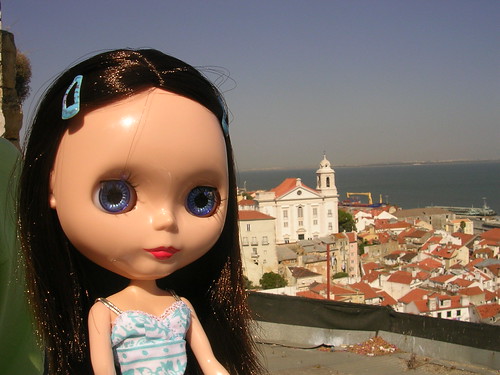




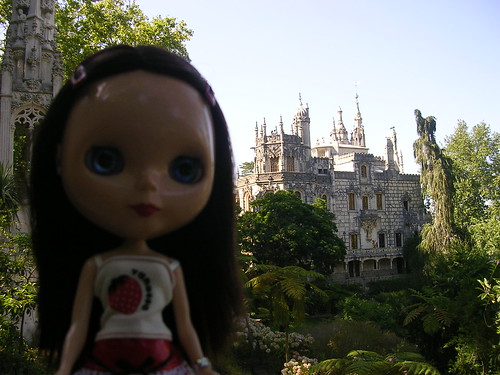
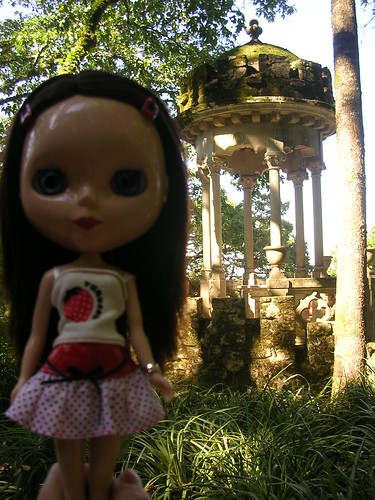

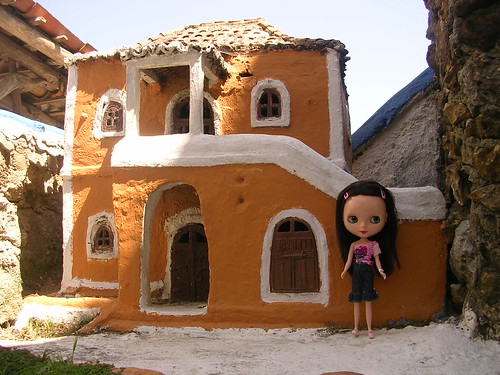
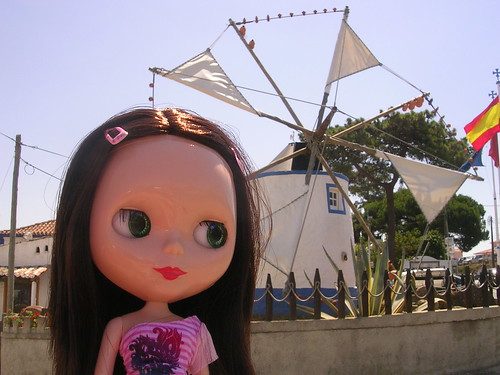
q chulo!! me apunto sitios para ver que en un mesecillo voy a Lisboa de viaje^^
ResponderEliminar